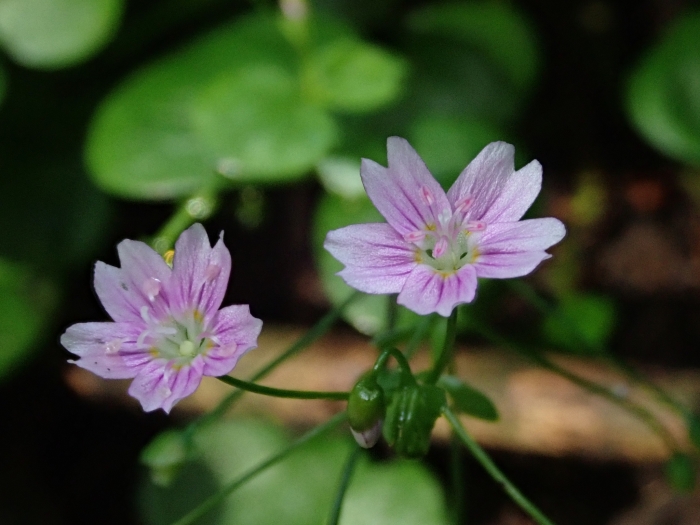Siberian Springbeauty
(Claytonia sibirica)
Siberian Springbeauty (Claytonia sibirica)
/
/

Daniel Cahen
CC BY 4.0



























































Estimated Native Range
Summary
Siberian Springbeauty is valued for its early spring blooms and is often used in rock gardens, alpine collections, and as a ground cover in shaded areas. It is relatively easy to maintain, requiring low to medium amounts of water and can adapt to a range of soil drainage conditions, from slow to fast. While it thrives in full sun, it can also tolerate part shade, making it versatile for various garden settings. However, gardeners should be aware that in some conditions, it can self-seed prolifically, potentially becoming weedy.CC BY-SA 4.0
Plant Description
- Plant Type: Herb
- Height: 0.5-1.5 feet
- Width: 1-3 feet
- Growth Rate: Moderate
- Flower Color: Pink, White
- Flowering Season: Spring
- Leaf Retention: Evergreen
Growth Requirements
- Sun: Full Sun, Part Shade
- Water: Medium
- Drainage: Slow, Medium, Fast
Common Uses
Bank Stabilization, Bee Garden, Butterfly Garden, Edible*Disclaimer: Easyscape's listed plant edibility is for informational use. Always verify the safety and proper identification of any plant before consumption., Groundcover, Low Maintenance, Showy Flowers
Natural Habitat
Moist, well-drained soils in open woodlands and forest edges
Other Names
Common Names: Pink Purslane, Candy Flower, Siberian Miner’s-Lettuce, Siberian Spring Beauty, Candyflower, Candy-Flower, Pink-Purslane, Sibirisk Vinterportulak, Sibirisches Tellerkraut, Claytonia De Sibérie
Scientific Names: , Claytonia sibirica, Claytonia sibirica var. sibirica, Montia sibirica, Limnia alsinoides, Claytonia alsinoides, Claytonia asarifolia, Montia asarifolia, Claytonia bifida, Limnia asarifolia
GBIF Accepted Name: Claytonia sibirica L.